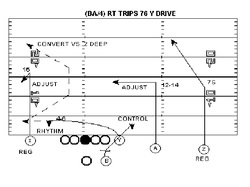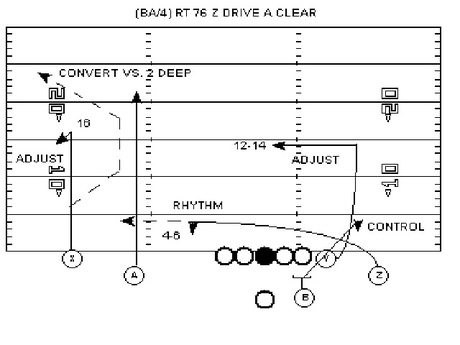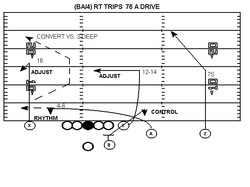The previous article illustrated "A Drive." The first (and most basic) variation would be to exchange the assignments of the inside recievers:

Remember - inside receivers learn together. So, as we go to 4 WR personnel, the backup "A" receiver already learned that on Drive: we will "tag" the drag runner; the other inside guy has the middle route.
1. Keep the comeback isolated to the boundary by using 3-1 sets.
2. Eliminate the comeback to the field from the quarterbacks thought process; two deployed receivers really should prevent squatting on a drag route by the flat defender.
3. Use the "Bench" tag, which is an "out" by the inside receiver - same picture by the quarterback, but with a more makeable throw:
1. "H Drive A Bench" from 1 RB/ 2 TE/ 2 WR personnel -- the tight ends learn the original inside reciever rules. H is tagged to run the drag, while Y has the middle route. A is tagged to run Bench.










 RSS Feed
RSS Feed
